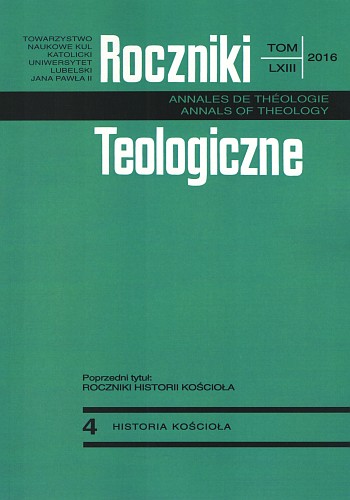The Abbess Magdalena Mortęska – Her Life and Reformist Initiatives Aimed at Female Education in the Post-Tridentine Era
The Abbess Magdalena Mortęska – Her Life and Reformist Initiatives Aimed at Female Education in the Post-Tridentine Era
Author(s): Żaneta SztylcSubject(s): Christian Theology and Religion, History of Church(es), Theology and Religion
Published by: Towarzystwo Naukowe KUL & Katolicki Uniwersytet Lubelski Jana Pawła II
Keywords: Magdalena Mortęska; convent education; female education; the post-Tridentine Monastic Reform; education; The Benedictine nuns of the Reform
Summary/Abstract: The paper presents a model of a medieval female education, which purpose was to prepare girls to the role of a wife and of a mother. Magdalena Mortęska, who was also educated in line with this model, lost her mother just as a few years old girl, and she was entrusted by her father under the tutelage of her aunt. This practice was very common and peculiar to the standards of that time. Magdalena’s aunt raised her in a severe discipline, teaching her, in the first instance, how to be devout, diligent, resourceful and thrifty person, and she prepared her to the role of a housewife and of a mother. However, some of these lessons turned out to be fatal for her, since in her early age she lost her right eye while she was cooking a meal with kitchen servants. Magdalena did not wish to be a married woman, on the contrary, she wanted to join the Benedictine nunnery of Chełmno, and thereby she refused the will of her father. Thanks to her stubbornness and strong faith, she made her convent vows on the 4th of June, 1579, and a week later she became the abbess of the Benedictine convent of Chełmno. As the abbess she initiated the fundamental reform, which purpose was the re-reading and enforcing of the original monastic rules. The Reform of the convent of Chełmno was fundamental and all the solutions were prepared by the new generation of nuns, since the old generation had ceased. The interpretation of the Rule, worked out through many years of experiences, became the law, which has been practiced by its own legislators. With this interpretation the preservation of the identity of the convent was very significant. The Renaissance era, in which Magdalena Mortęska lived and acted, saw the new demand to spread education and culture among women. Conscious of that, the abbess took the challenge thereby the reformed congregation was provided the opportunity to educate females. Magdalena Mortęska extended this activity upon all emerging foundations, and moreover, her labor was innovative to that time. Her efforts increased the number of centers associating female youth, and thanks to her pro-educational activity, she became the pioneer of females’ development.
Journal: Roczniki Teologiczne
- Issue Year: 63/2016
- Issue No: 04
- Page Range: 53-73
- Page Count: 21
- Language: English

